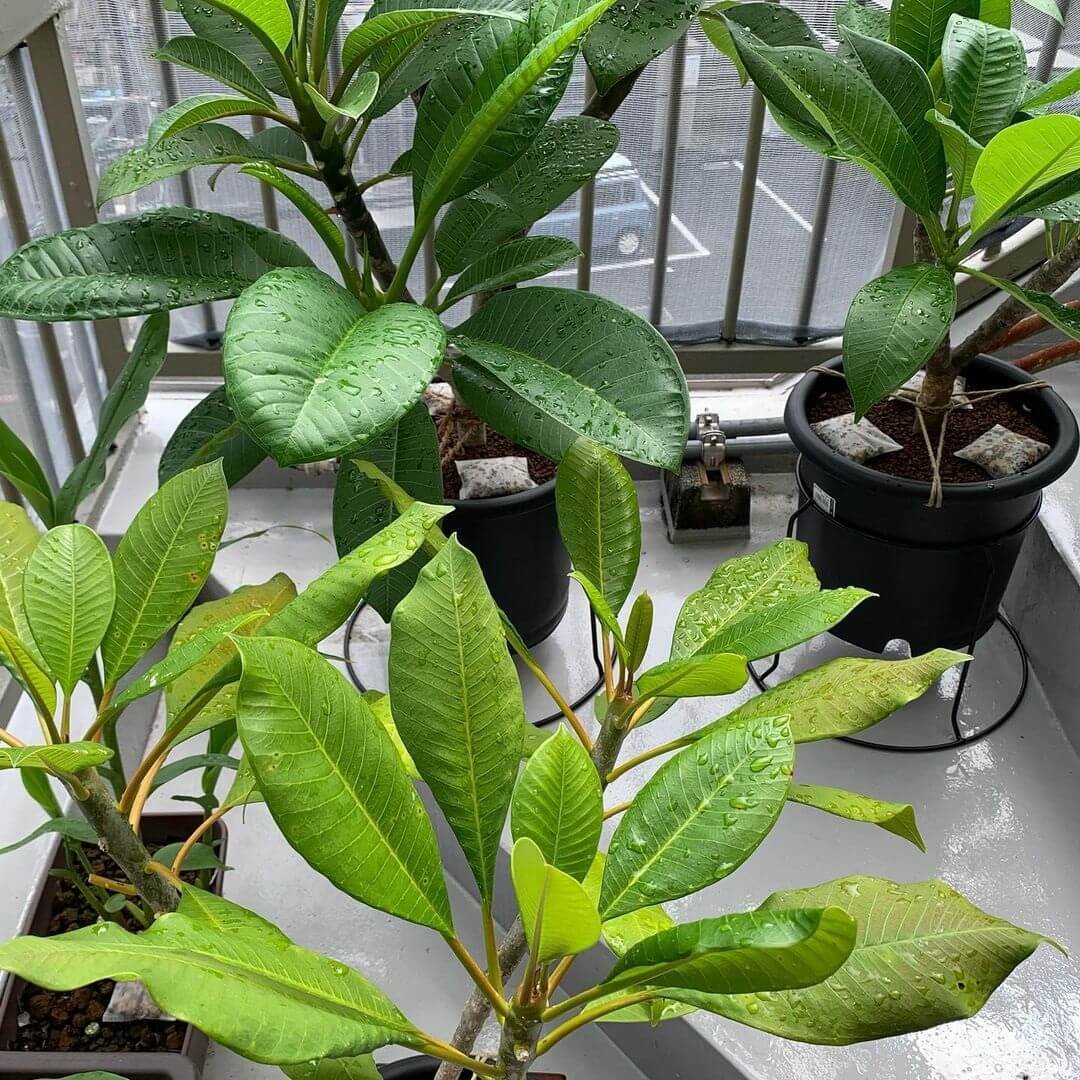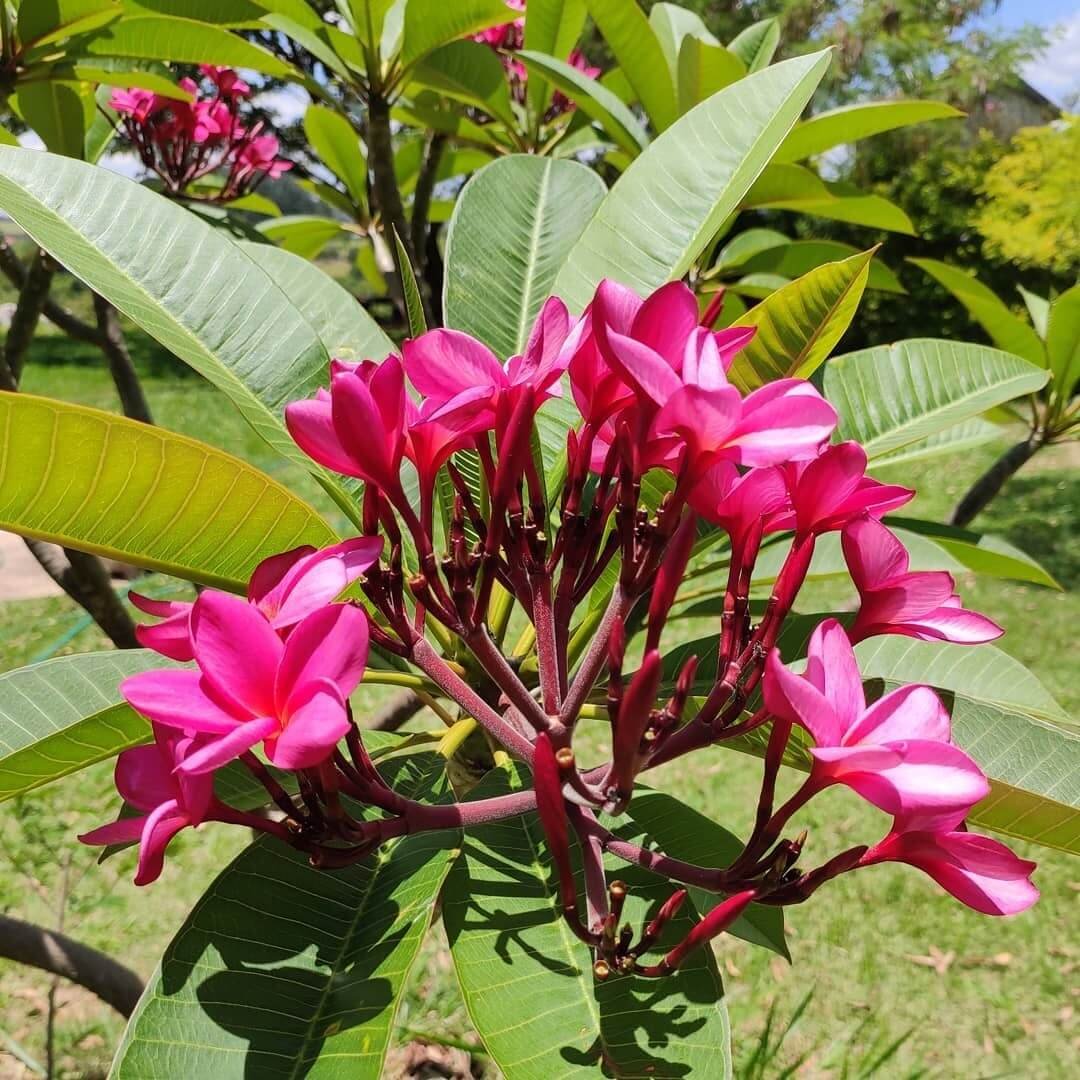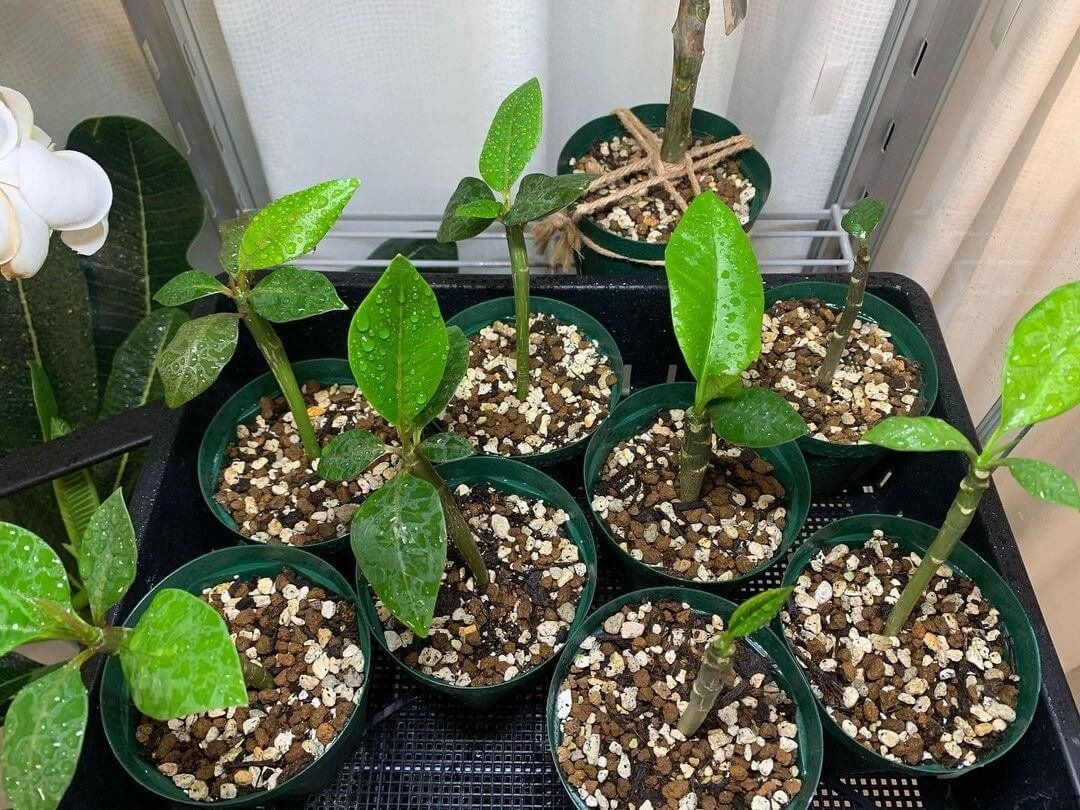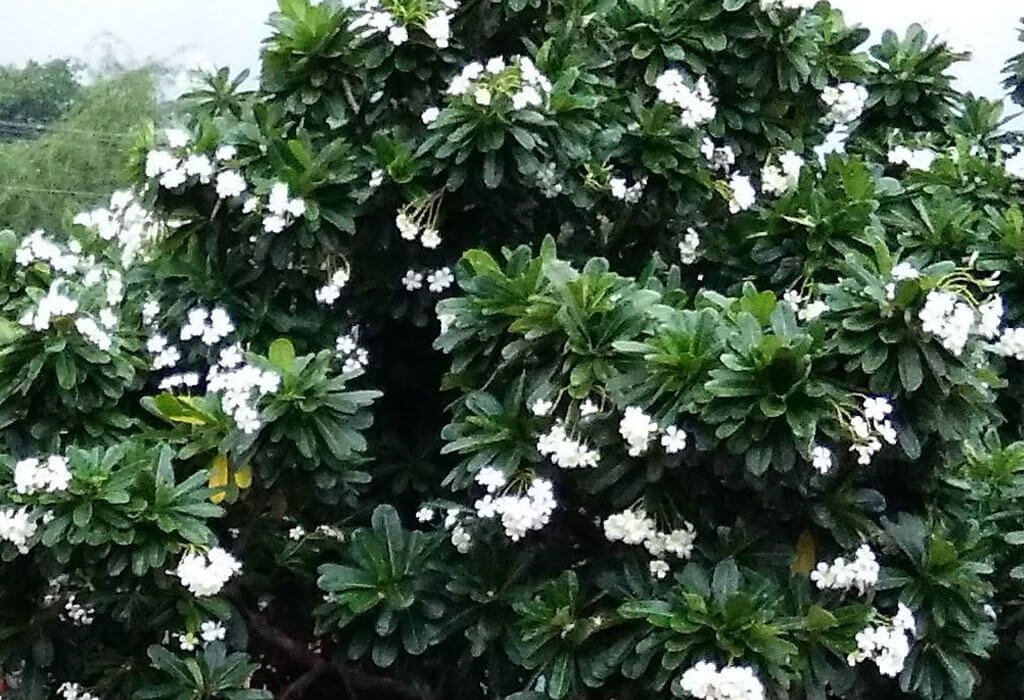Are you searching for a tree with extra fragrant and freshness, then a Champa tree (Plumeria) is a good choice for you. Champa tree is known as perfumery tree. Plumeria tree is a medium- giant, tropical ever inexperienced tree that grows to a height of fifty feet or on top. The bark is grey in colour and sleek.
Its flowers have most fragrant at night. The shoots, young petioles, the stock attaching the leaf blade and therefore, the leaf blades are yellowness and sleek. Leaves are ovate. The fruits of the tree grow in clusters, seem like grapes, contain capsule-like 1-2 seeds, brown.
These flowers grow on trees happiness to the Plumier genus; thus, they’re also known as Plumeria. Although most trees and thus the flowers are native to Central America and the North American nation, their presence isn’t restricted to those areas alone.
What is Champa Tree (Plumeria)?
This tree may be a genus of flowering plants within the family “Apocynaceae“.
Genus Plumeria are little tropical trees with odorous flowers, usually accustomed, create splendidly scented leis in Hawaii.
A plumber may be a little genus of 7-8 species native to tropical and semitropical Americas.
Other names of Champa tree
Other names of this tree are Plumeria, Frangipani, red Frangipani, common Frangipani, temple tree, red paucipan, red-jasmine.
The scientific name of this tree is Magnolia champaca.
History of Plumeria Tree
The Champa tree was introduced into India. It originates from the hotter elements of the Central American country, North American country, America and Jamaica. It’s been cultivated in India for ages and has nonheritable native names of several country elements.
Originally native to North American country, Central America and South American country. It’s been widely cultivated in semitropical and tropical climates worldwide and maybe a standard garden and park plant, furthermore as getting used in temples and cemeteries.
Champa Flowers & Leaves
Leaves | Flowers |
| Champa tree leaves are in ovate shape. This tree has attractive and dark green leaves. | It flowers has most fragrant at night. Flowers are found in white, yellow or orange colours. Flowers are long, inverted, lance formed with skinny petals. |
How to Plant Plumeria Tree?

- When to plant: Best season to plant Champa trees is spring and summer.
- Where to plant: Often adult within the garden as a decorative woody plant or tiny tree, genus Plumeria plants got to be adult in well-draining soil that’s slightly acidic. They conjointly would like a minimum of six hours of full sun, Whereas the plants are fairly tolerant of each salt and windy condition. They don’t seem to be tolerant of cold and should be protected.
- Choose the right soil: For growing Champa tree, use a rough, well-draining that is slightly acidic, potting combine—cactus mix or perlite and sand ought to be fine.
- How deep to plant? If you plant the Champa tree on the ground, then they got to be planted 15 feet apart so that their roots have adequate area to grow. You can plant a root ball in a very hole equivalent to the roots; however, two to three times the dimensions.
- How much sun does the Champa tree need? Champa tree-like lots of sun light-weight. The plants like bright direct daylight. They have a minimum of 5-6 hours of direct daylight for correct growth. They conjointly grow beneath the partial shade.
- Can plumeria grow in pots? This one is genus Plumeria Obtuse with White Flowers are known as White Champa. With the correct genus Plumeria plant care, these marvellous tropical plants will live for several years in containers.
- How much water does this tree need? Plumeria care, for the foremost half, is minimal. Whereas plumeria detests wet feet, they ought to be more deeply once irrigated so allowed to dry out some before watering once more. They conjointly ought to be inseminated concerning each 2 to 3 weeks throughout their active season.
Growing Champa Tree at Home?

- First, take mature size branch of Plumeria (Champa tree).
- Then cut the all leaves from this branch.
- And put this branch in shades for 3 days.
- Take good draining and slightly acidic soil.
- Then dip the branch with rooting powder.
- Insert the branch in soil 4 inches.
- Give water to this plant. Again water after 2 weeks.
- After 30 days it will start to grow.
- And after 90 day’s it will start flowering.
Plumeria Tree Care

- Temperature
They prefer heat, wet atmospheric conditions. The plants will tolerate a specific amount of warmth. They’re not proof against cold conditions. Therefore, in regions with extreme winters, shift the plants inside.
They need a minimum of 5-6 hours of direct daylight for correct growth.
- Watering
Champa tree sort of a heap of water throughout their active season suggests that in spring and summer, however, use caution with overwintering due to this may cause rot and kill the plant. Therefore the best technique is to dip your finger to regarding an in. Into the soil, and if it’s dry, then water the plant.
This tree relies on your geographical zone and season, and conjointly whether you have got unbroken, it fully sun could also be you wish to water daily or alternate days are reckoning on your climate.
- Pruning
Build a move take away the highest branches. Solely take away what you’ve got to do, not make it. Trimming the highest off can encourage new branches to make on the aspect of the tree. Take an oversized branch that has three or four different branches projected from it.
Pruning to get rid of broken, dead or morbid components are done at any time of the year. Most trees and shrubs, particularly those who flower on the current season’s new growth, ought to be cropped in late winter or early spring before the onset of recent growth.
- Fertilizing
Wealthy nitrogen fertilizer may be used Any fertilizer, vermicomposting or trash may also be used. Feed the plants throughout spring to summer.
When fertilizing Plumeria, you must use a high Phosphate fertilizer, like Peters Super Blossom Booster 10-50-10. If you utilize a fertilizer high in gas, you may build a healthy, however tall, and leggy Plumeria.
- Winter care
Reduce watering in middle fall and stop fully once the plants enter dormancy in winter. Resume regular watering as new growth seems in spring. A high phosphate chemical, like 10-30-10, can encourage blooms.
Go dormant in winter, requiring no lightweight soil or water. The genus Plumeria Society of America recommends storing plants in an exceedingly dry place wherever temperatures stay higher than phase transition. This might be a closet, garage, attic.
Types of Champa Tree
- Red frangipani – This could be a vascular plant species happiness to the genus Plumeria. Originally native to North American nations, Central America, South American nations and South American nations, it’s been widely cultivated in semi-tropic and tropical climates worldwide. It could be a well-liked garden and park plant, further as getting used in temples and cemeteries. The scientific name of this plant is “Plumeria rubra.”
- Plumeria Singapore Dwarf – Plumeria Singapore Dwarf could be a species of the genus Plumeria. It’s native to the archipelago, southern North American nation, Belize, Guatemala, and American. However wide cultivated for its decorative and perfumed flowers around the world, wherever befittingly heat climate exists. The scientific name of this plant is magnoliopsid genus obtuse.
- Plumeria alba – This is a species of the genus Plumeria. This 2-8m deciduous bush has slim, elongated leaves, giant and powerfully perfumed white flowers with a yellow centre. Native to Central America and therefore the Caribbean, it’s currently common and naturalized in southern and south-eastern Asia.
- Plumeria Pudina – Plumeria Pudina could be a species of the magnoliopsid genus native to Panama, South America nation and South American nation. This crazy developer has exceptional spoon-shaped takes-off, and its blooms are white with a yellow centre.
- Champaca magnolias – Son Champa is a large evergreen tree in the family Magnoliaceae. It was previously classified as Michael champaca. It is known for its fragrant flowers. Son Champa’s timber is used in woodworking. Magnolia champaca grows to 160 feet or taller. Its trunk can be up to 2 meters in diameter. The tree has a narrow umbelliform crown. It has certainly fragrant blossoms in shifting shades of cream to yellow-orange, which blossom amid June to September.
- Pink Champa – They are extremely sweet-scented and bloom freely from spring throughout fall. The flowers of these stunning plants are employed in creating ancient Hawaiian leis.
- Green Champa – The fragrance of the Plumier inexperienced is that the authentic scent of Hawaii, a delight to the senses and a marvel to see.
Benefits of Champa Tree
It is used to treat dyspepsia, worm infestation, burning sensation, gout, ulcer and wounds.
And also use to treat cardiac disorders, malaria, inflammation, amenorrhea, cough.
Nag Champa could be a fragrance of Indian origin. It’s made up of a mixture of wood and either compact or frangipani. Once frangipani is employed, the fragrance is sometimes brought up merely as champs. Nag Champa is usually employed in incense, soap, fragrance oil, essential oils, candles, and private toiletries.
Protection against pests and disease
Spider mites
Spider mite makes Yellow, white spots on the leaves.
Very Pieris rape or red spots on the leaves that move. White, soft webbing that seems on the face of the leaves.
To defend the Champa plant isolate the plant, so spray the leaves and stems of the plant with pressure water, like from a hose or regulator. Spray down the maximum amount of the plant as attainable. You can use Azadirachta Indica oil or insecticidal oil.
Thrips
Trip causes distorted elements of the plant.
To defend your plant, Regular pruning helps eliminate drips. Drops on flowers will be eliminated as long as you see signs of harm by employing a gentle insect powder like insecticidal soap or Azadirachta indica oil or pruning the flowers.
Slugs
Slugs can eat any reasonably vegetation, however, like tender leaves. Slugs will eat vegetables and fruits, inflicting ugly harm to crops.
Use kieselguhr, crushed eggshells, or copper wire around plants to form a barrier that slugs cannot cross to defend this plant. Clean up boards and weedy areas and frequently flip rocks over to permit the undersides to dry out.
Scale
Scale broken plants look withered and sickly. Leaves flip yellow and should drop from the plant. They’ll even have sticky sap or a black plant on the leaves and stems.
To defend the Champa plant, you’ll use bleach-free dishwasher detergent.
Homemade management of plant scale may also be achieved with oil spray.
Wash the leaves singly with the soap/oil mixture and rinse well.
Most Interesting Facts:
- The flowers are most fragrant in the dead of night.
- They use Their scent to draw in moths for pollination.
- In folk literature, Plumeria is believed to believe in producing a shelter for ghosts and demons.
- This flower is understood as a shrub within Australia. The Plumeria is expounded to the rosebay; the milky sap of the Plumeria is toxic and will irritate the eyes and skin.
- The Plumeria was named in honor of Charles Plumier, a French life scientist.
Related Questions
1. How huge do genus Plumeria trees get?
A genus Plumeria may be an aggressive tropical tree that produces plenty of scented blooms between March and Oct. A tiny, low tree, the genus Plumeria, reaches heights of concerning thirty feet at maturity. Additionally referred to as a bush, plumbers need a hot climate to grow.
2.Does genus Plumeria would like loads of water?
Plumeria doesn’t ought to be patterned in any respect except if you reside in an exceedingly dry winter climate, then genus Plumeria can like fast water. Watering the plant in no time on the soil’s surface, not regular water once each time.
3. Can I grow a genus Plumeria tree indoors?
Plumeria shrubs are all-mains to several conditions; the plant may be grown in containers inside as houseplants. Scented flowers of the genus Plumeria are normally used for creating leis in Hawaii; however, once grown up inside, the fragrance can fill the air. Genus Plumeria shrubs are comparatively simple to grow with a bit of care.
4. Can you grow Champa tree in a pot
Yes, you can
5. Do the Champa tree spread?
Yes, it is

